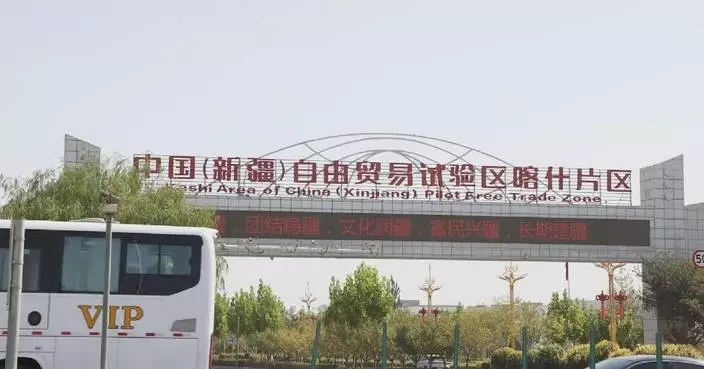China's Yangtze River Economic Belt saw its foreign trade surge to a record high of 16.31 trillion yuan (about 2.3 trillion U.S. dollars) in the first 10 months of this year, up 4.2 percent over the same period of last year, according to the latest official data released by local customs.
The Yangtze River Economic Belt comprises 11 provincial-level regions along the Yangtze — the longest river in Asia — stretching from Sichuan and Yunnan provinces in western China to economic powerhouses in eastern China including affluent Jiangsu and Zhejiang Provinces and the financial hub of Shanghai.
The region covers more than 2 million square kilometers, or one-fifth of the country, and accounts for over 40 percent of China's total population.
The region's foreign trade volume in the first 10 months accounts for 45.3 percent of the total imports and exports of the entire country, according to the data released by the provincial customs administration of Jiangsu.
Notably, Jiangsu Province played a significant role in the foreign trade surge, with its imports and exports soaring to 4.61 trillion yuan (about 636 billion U.S. dollars) in the 10-month period, reflecting an impressive year-on-year growth rate of 7.6 percent. In the first 10 months, Jiangsu Province's imports and exports contributed 28.3 percent to the overall foreign trade of the entire Yangtze River Economic Belt, securing its position as the top player within the region.
China launched the Yangtze River Economic Belt initiative in early 2016, aiming to transform the region into a golden economic belt featuring a more beautiful ecology, smoother transport networks, a more coordinated economy, a better-integrated market and a greater quantity of scientific mechanisms.

Yangtze River Economic Belt sees foreign trade surge to record high
China's strong commitment to climate action and green transition efforts have yielded remarkable outcomes, accelerating its low-carbon development and contributing substantially to global climate mitigation efforts.
China has long placed great emphasis on addressing climate change, being an early signatory to the United Nations Framework Convention on Climate Change and one of the first to sign and ratify the Paris Agreement. The country showcased its accomplishments in meeting its "dual carbon" goals of peaking carbon emissions before 2030 and achieving carbon neutrality before 2060 at a side event on "Energy Conservation and Carbon Reduction: China's Actions", held during the 29th session of the Conference of the Parties to the United Nations Framework Convention on Climate Change (COP29) in Baku, Azerbaijan earlier this month. China has established the world's largest and most comprehensive new energy industry system, with solar power generation costs falling by 80 percent, said Wen Hua, Deputy Director of the Department of Resource Conservation and Environmental Protection at the National Development and Reform Commission. The official also noted that China's exports of wind and solar products helped other countries cut 810 million tons of carbon emissions in 2023 alone.
"We really need to thank China more generally, because China is building the industrial base, the capacity, the planning, the vision, the complex systems infrastructure to actually get this done right now," said Columbia University Professor and economist Jeffery Sachs.
Official release shows that China has continued to reduce carbon intensity, with the share of non-fossil energy consumption reaching 17.9 percent in 2023, while the share of coal consumption dropped from 67.4 percent in 2013 to 55.3 percent. The country's forest stock has increased by 6.5 billion cubic meters since 2005, reaching 19.49 billion cubic meters.
By the end of July 2024, China's total installed capacity of wind and solar power had exceeded 1.2 billion kilowatts, more than doubling the 2020 level and achieving the 2030 target 6 years ahead of schedule.
"Our commitment to addressing climate change and pursuing green, low-carbon development is self-driven, not imposed upon us by others. As a major developing country, China has always been a responsible nation, honored its commitments with concrete actions. Since announcing our goals of peaking carbon emissions and achieving carbon neutrality to address climate change, we have strictly adhered to them. We organically integrate global climate change goals with our own green, low-carbon development efforts, working towards building a community with a shared future for mankind," said Chang Jiwen, deputy director of the Institute of Resources and Environmental Policy at the Development Research Center of the State Council.

China accelerates green transition, boosts global climate efforts










